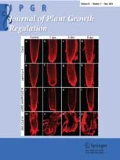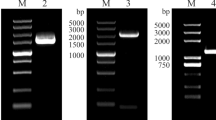Abstract
Pumpkin seeds are used globally for snacks, bakery, and oil due to their nutritional and medicinal properties. The seeds of pumpkin have 35–45% oil, rich in health-enhancing fatty acids especially linoleic (52.7%), oleic (28.3%), and palmitic (12.7%). However, the presence of thick leathery seed coat (hull) limits the use due to decortication process required for further use. A mutant carrying thin and papery layer overcame the barrier of cost, time, and labor for decortication of pumpkin seed. The recessive gene mutation prevents lignin deposition and leads to collapse of the middle testa layers of the pumpkin seed. Mutation also changed the color of seeds from white to olive-green and produced dark-colored oil. Seed testa remains the same as in wild variety with five distinct testa layers of epidermis (E), hypodermis (H), sclerenchyma (S), parenchyma (P), and innermost chlorenchyma (C) during the initial stages of development. The changes in the seed testa start with the lignification process, which coincides with the reduced polyamine content. Lignin deposition diminution also coincides with reduced expression of the genes or enzyme activities involved in secondary wall formation. This suggests that, the mutation led to a series of changes to bring about a single response, i.e., naked seed or hull-less seed. Thus, this mutation should be studied thoroughly to determine the effects causing reduced lignin deposition and production of hull-less seeds. This review is focused on the changes induced by mutation that causes hull-less seed trait and its implications for commercial use.

Similar content being viewed by others
References
Alfawaz MA (2004) Chemical composition and oil characteristics of pumpkin (Cucurbita maxima) seed kernals. Sci Food Agric 2:5–18
Bezold TN, Loy JB, Minocha SC (2003) Changes in the cellular content of polyamines in different tissues of seed and fruit of a normal and a hull-less seed variety of pumpkin during development. Plant Sci 164(5):743–752
Bezold TN, Mathews D, Loy JB, Minocha SC (2005) Molecular analysis of the hull-less seed trait in pumpkin: expression profiles of genes related to seed coat development11. Seed Sci Res 3:205–217
Dhatt AS (2019) PAU Magaz Kadoo-1: First variety of hull-less seeded pumpkin in India. Progressive Farming 55(1):15
EI-Aziz AA, EI-Kalek HA, City N, (2011) Antimicrobial proteins and oil seeds from pumpkin (Cucurbita moschata). Nat Sci 9:105–119
El-Adawy TA, Taha KM (2001) Characteristics and composition of watermelon, pumpkin and paprika seed oils and flours. J Agric Food Chem 49:1253–1259
Fruhwirth GO, Hermetter A (2007) Seeds and oil of the Styrian oil pumpkin: Components and biological activities. Eur J Lipid Sci Technol 109:1128–1140
Gardingo JR, Da Silva DJ, Casali VW, Da Lima-Neto IS, Ferrari RA (2011) A ‘hull-less’ seed trait of Cucurbita maxima Duch in accession BGH 7653’. Rep Cucurbit Genet Coop 33:47–50
Gohari AA, Farhoosh R, Haddad K (2011) Chemical composition and physicochemical properties of pumpkin seeds (Cucurbita pepo Subsp. pepo Var. Styriaka) grown in Iran pp-1053–1063.
Houtman CJ, Atalla RH (1995) Cellulose-lignin interactions (a computational study). Plant physiol 107(3):977–984
Inan N, Yildiz M, Sensoy S, Kafkas SA, Abak K (2012) Efficacy of ISSR and SRAP techniques for molecular characterization of some Cucurbita genotypes including naked (hull-less) seed pumpkin. J anim plant sci 22(1):126–136
Kaur K (2016) Evaluation of advance breeding lines for growth, yield and quality traits of hull-less seeded Pumpkin (Cucurbita pepo subsp. pepo var. styriaca). M.Sc. Thesis, Punjab Agricultural University.
Kaur K, Dhatt AS, Chawla N (2017) Evaluation of hull-less seeded pumpkin lines for growth, yield and quality traits under subtropical conditions. Indian J Hortic 74:382–387
Kreuter MH (2000) Hormone disbalance and urinary bladder disease. PhytoNovum, Emil Flaschman AG, Zurich, Switzerlan pp 2–24.
Krimer-Malesevic V, Madarev-Popovic S, Vastag Z, Radulovic L, Pericin D (2011) Phenolic acids in pumpkin (Cucurbita pepo L.) seeds. In: Watson VPR (ed) Nuts and Seeds in Health and Disease Prevention. Elsevier, NL, pp 925–932
Lelley T, Loy B, Murkovic M (2009) Hull-less oil seed pumpkin. Oil crops. Springer, New York, NY, pp 469–492
Makni M, Fetoui H, Gargouri NK, Garouri EM, Zeghal N (2011) Antidiabetic effect of flax and pumpkin seed mixture powder: effect on hyperlipidimea and antioxidant status in alloxandiabetic rats. J Diabetes Compl 25:339–345
Murovec J (2015) Phenotypic and genetic diversity in pumpkin accessions with mutated seed coats. Hort Sci 50:211–217
Murovec J, Draslar K, Bohanec B (2012) Detailed analysis of Cucurbita pepo seed coat types and structures with scanning electron microscopy. Bot 90:1161–1169
Schmidlin CB, Kreuter MH (2003) Cucurbita pepo, mogliche Einfluss auf hormonelle Ungleichgewich bei Inkontinenz. Phytotherapie 3:2–4
Schoeniger G (1950) Genetic studies of C pepo. Zuchter 20:321–326
Seymen M, Uslu N, Turkmen O, Al Juhaimi F, Ozcan MM (2016) Chemical compositions and mineral contents of some hull-less pumpkin seed and oils. J Am Oil Chem Soc 93:1095–1099
Shen Q, Wu L, Zhao X, Li Y (2019) Comparative analysis of electron microscopic structure of seed testa, lignin and biosynthesis-related enzyme activities in hulled and hull-less seeds of Cucurbita moschata. Sci Hortic 245:137–143
Singh D, Dathan ASR (1972) Structure and development of seed coat in Cucurbitaceae. VI Seeds of Cucurbita Phytomorph 22:29–45
Stevenson DG, Eller FJ, Wang L, Jane JL, Wang T, Inglette GE (2007) Oil and tocopherol content of pumpkin seed oil in 12 cultivars. J Agric Food Chem 55:4005–4013
Stuart SG, Loy JB (1983) Comparison of testa development in normal and hull-less seeded strains of Cucurbita pepo L. Bot Gaz 144:491–500
Teppner H (2000) Cucurbita pepo (Cucurbitaceae) — history, seed coat types, thin coated seeds and their genetics. Phyton-Ann Rei Bot 40:1–42
Tsakins J, Lalas S, Lazoz ES (1997) Characterization of crude and purified pumpkin seed oil. Gras Aceit 48:267–272
Turkmen O, Ozcan MM, Seymen M, Paksoy M, Uslu N, Fidan S (2017) Physico-chemical properties and fatty acid compositions of some edible pumpkin seed genotypes and oils. J Agroaliment Processes Technol 23(4):229–235
Turkmen O, Uslu N, Paksoy M, Seymen M, Fidan S, Ozcan MM (2015) Evaluation of fatty acid composition, oil yield and total phenol content of various pumpkin seed genotypes. La Rivista Italiana dele Sostanze Grasse VOL. XCII -APRILE/GIUGNO, 93.
Wenzl T, Prettner E, Schweiger K, Wagner FS (2002) An improved method to discover adulteration of styrian pumpkin seed oil. J Biochem Biophys Methods 53:193–202
Xue L, Yu G, Mingzhy G, Chong SC, Shu PQ (2013) Histological analysis of hulled and hull-less squash seed coat. Int J Agric Biol 15:1047–1050
Younis YMH, Ghirmay S, Al-Shihry SS (2000) African Cucurbita pepo L.: properties of seed and variability in fatty acid composition of seed oil. Phytochem 54:71–75
Zraidi A, Pachner M, Lelley T (2003) On the genetics and histology of hull-less character of styrian oil-pumpkin (Cucurbita pepo L.). Rep Cucurbit Genet Coop 26:57–61
Author information
Authors and Affiliations
Contributions
GKC wrote the paper, AK collected literature, ASD edited and corrected the paper.
Corresponding author
Ethics declarations
Conflict of interest
On behalf of all authors, the corresponding author states that there is no conflict of interest.
Additional information
Publisher's Note
Springer Nature remains neutral with regard to jurisdictional claims in published maps and institutional affiliations.
Handling Editor: Parvaiz Ahmad.
Rights and permissions
About this article
Cite this article
Chahal, G.K., Kaur, A. & Dhatt, A.S. A Single-Gene Mutation Changed the Architecture of Pumpkin Seed: A Review. J Plant Growth Regul 41, 113–118 (2022). https://doi.org/10.1007/s00344-020-10289-9
Received:
Accepted:
Published:
Issue Date:
DOI: https://doi.org/10.1007/s00344-020-10289-9




